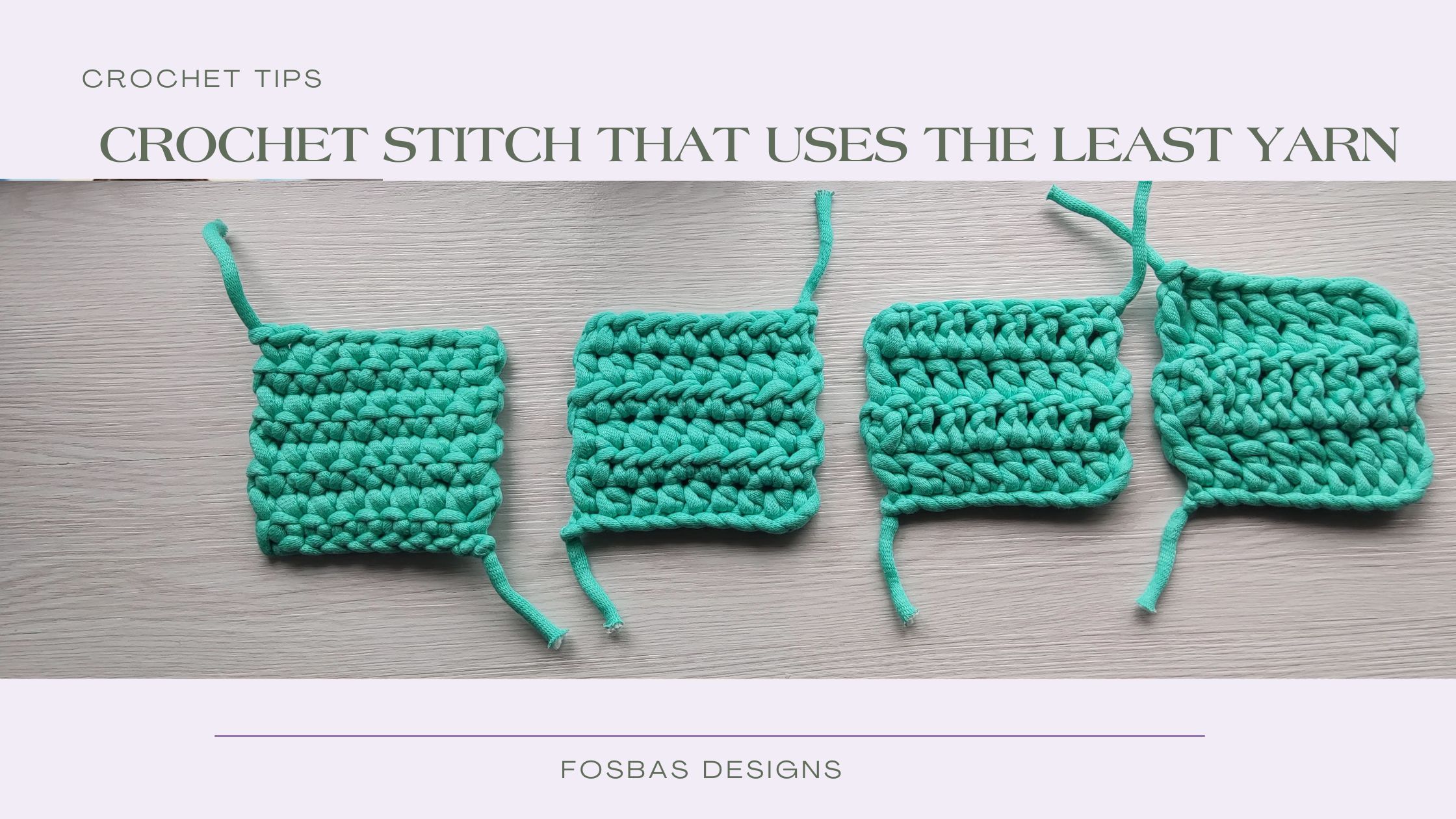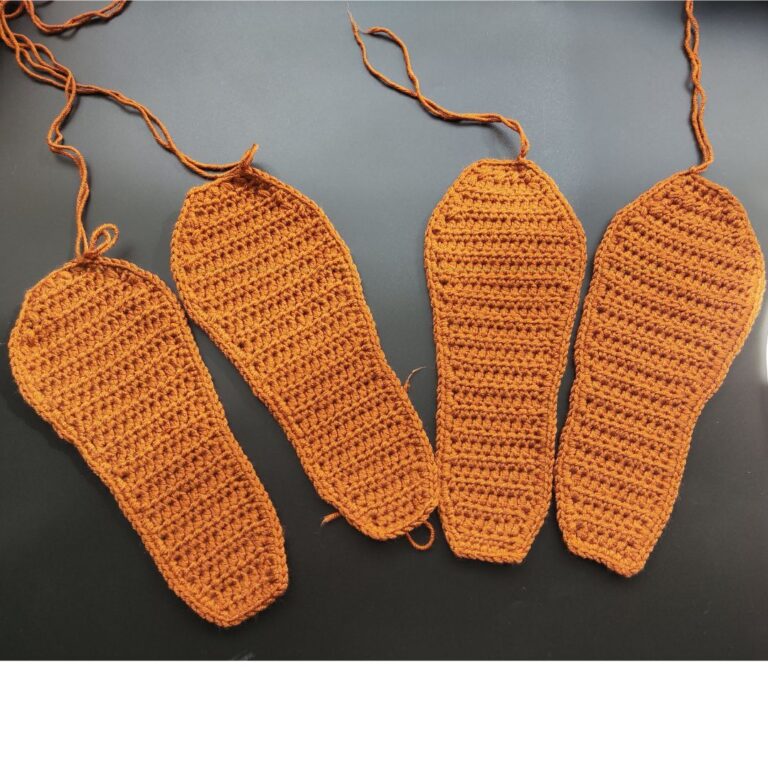What Crochet Stitch Uses the Least Yarn?
Have you ever wondered what crochet stitch uses the least yarn? Especially when you want to get it right and not lose to yarn chicken. I have made several experiments with the different crochet stitches to share the outcome with you!
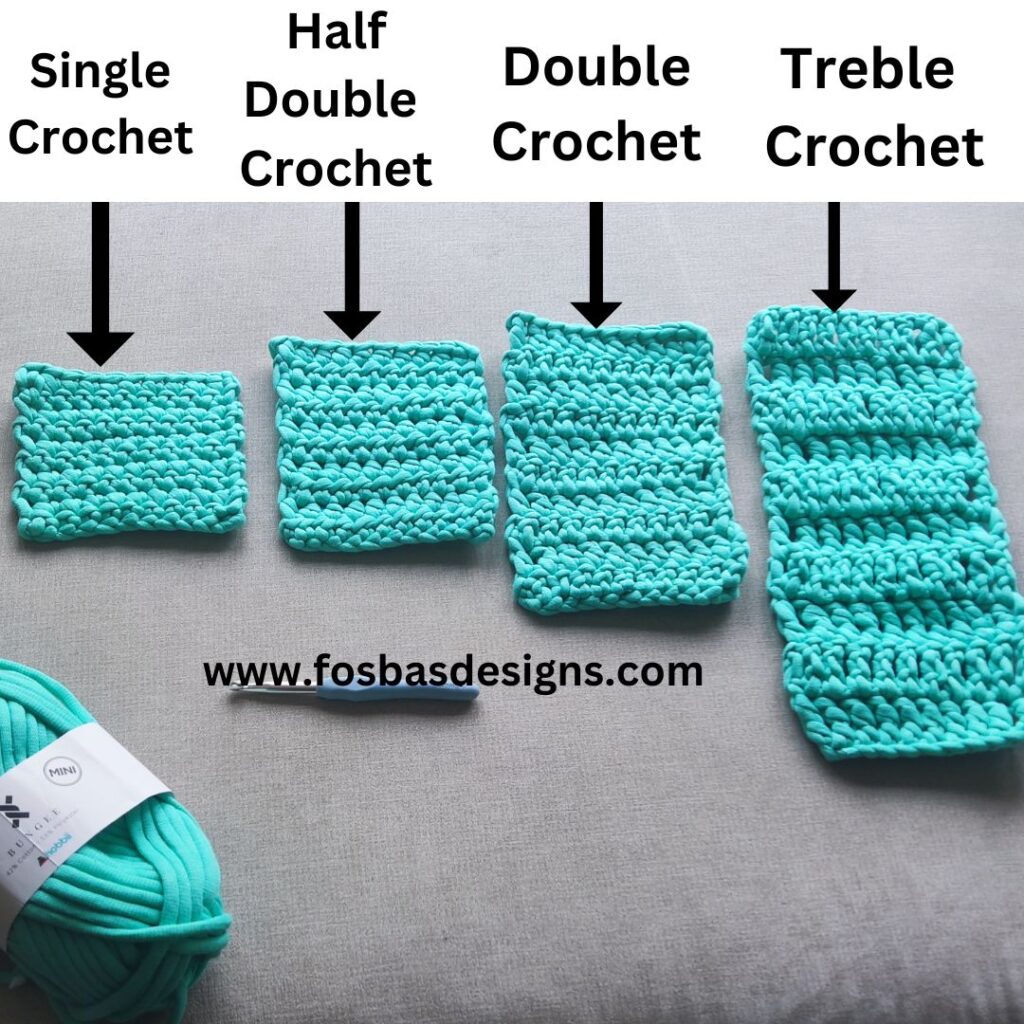
When considering the basic crochet stitch (single crochet, half double crochet, double crochet, and treble crochet) that uses the least amount of yarn for a project, double crochet uses the least amount of yarn, followed closely by the treble crochet.
| Stitch | Number of rows | Number of stitches | Weight (g) | Yards | Inches |
| Single crochet | 8 | 81 | 29 | 9.6 | 346 |
| Half double crochet | 6 | 64 | 27 | 9.4 | 334 |
| Double crochet | 4 | 46 | 24 | 7.8 | 283 |
| Treble crochet | 3 | 43 | 26 | 8.2 | 303 |
This means that the double crochet stitch uses the least amount of yarn
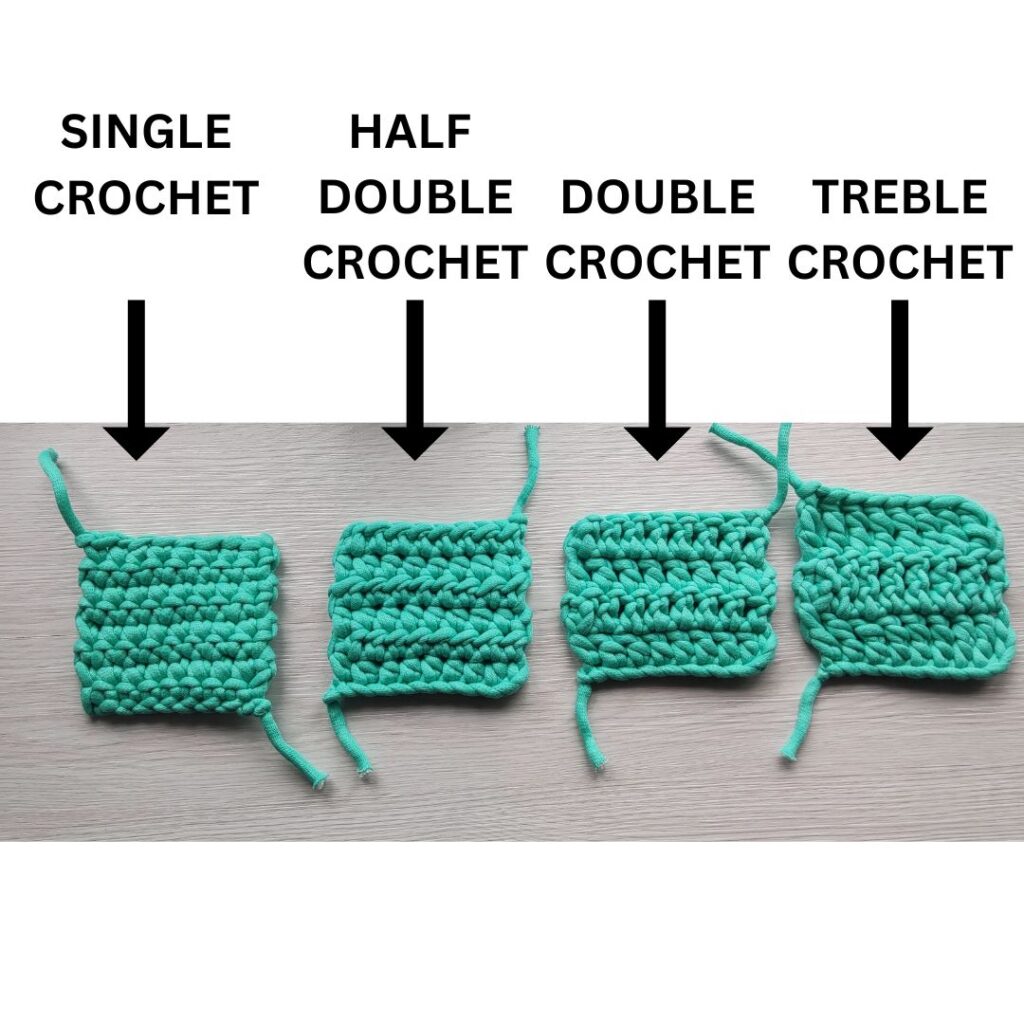
The double crochet stitch, followed closely by the Treble crochet stitch, uses the least amount of yarn for the basic crochet stitches. At the same time, the trellis stitch uses the least amount of yarn when it comes to crochet lace stitches.
Read my detailed tips and experiment showing how I came up with these and also the other crochet stitches tested.
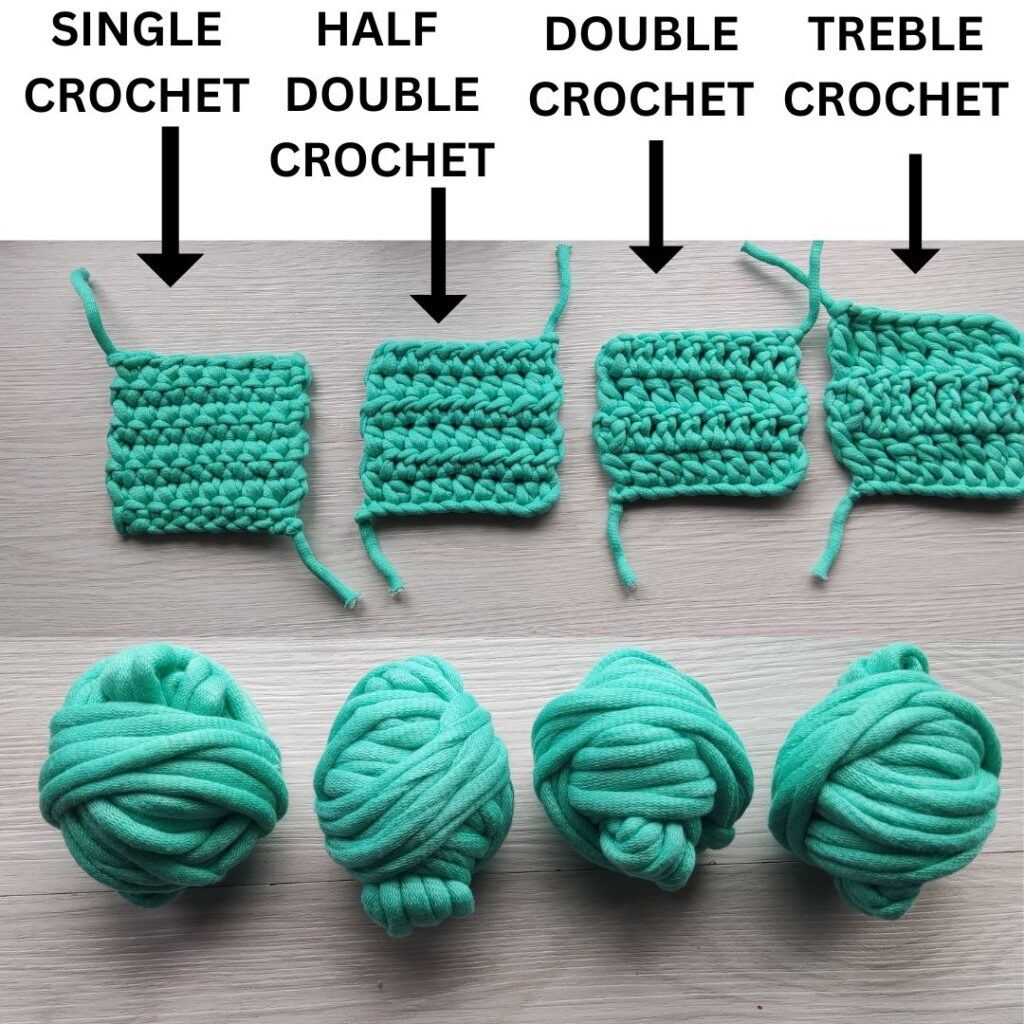
I made a few swatches of the basic crochet stitches using an 8 mm crochet hook and a bulky weight yarn plus the same number of stitches – 100 stitches of single crochet, half double crochet, double crochet, and treble crochet!
Here is what I found – the single crochet uses the least amount of yarn BUT produces the smallest swatch, which means for a larger project like a blanket, the single crochet will use more yarn!
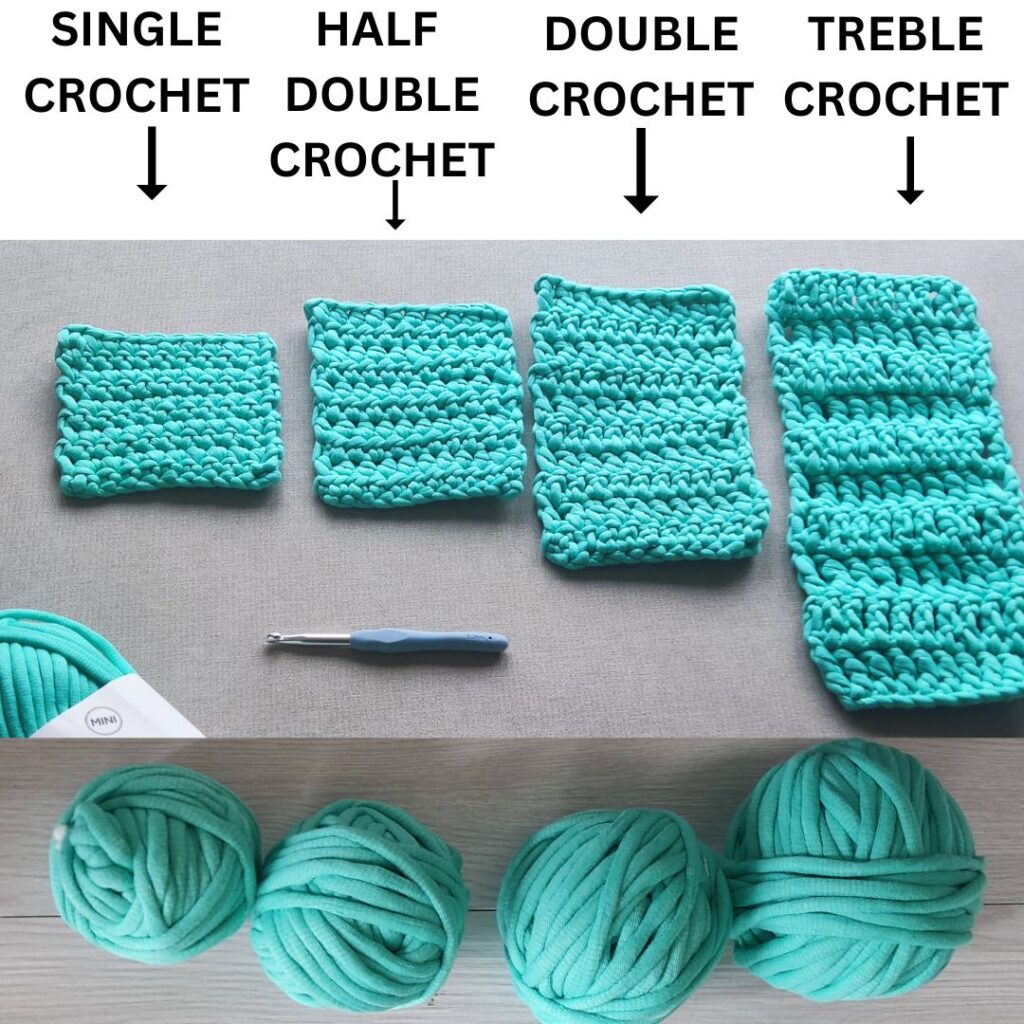
When working on a crochet project, it’s important to consider how much yarn you’ll need. Yarn can be expensive, and some stitches use more yarn than others. Knowing which crochet stitch uses the least yarn can help you save money and maximize your available materials.
When crocheting, some stitches are more economical in their yarn usage than others. A great option for yarn-saving purposes is the Solomon stitch, which is versatile, quickly worked up, and has a unique pattern. Another yarn-efficient stitch is the single crochet, which uses shorter stitches and is particularly helpful when creating projects with multiple colors and stitches.
Choosing stitches wisely allows you to maximize your assigned yarn quantities and create stunning projects without breaking the bank. Remember this as you develop your skills and take on new crochet challenges.
Factors Affecting Yarn Usage
This article discusses the various factors that affect yarn usage in crochet projects. By understanding these factors, you can choose the most suitable crochet stitch that uses the least yarn for your projects.
Yarn Weight
Yarn weight plays a significant role in determining how much yarn is used in a crochet project. Different yarn weights require different hook sizes, which affect the spacing between stitches and the overall density of the fabric. Generally, lighter yarns like lace or fingering will use less yarn than heavier weights like bulky or super bulky yarn.
Hook Size
The size of the crochet hook you choose affects yarn usage, as bigger hooks create larger loops and spaces within the stitch pattern, while smaller hooks create tighter stitches. Using a bigger crochet hook can help conserve yarn, but it’s essential to maintain the right balance between hook size, yarn weight, and stitch tension to achieve the desired fabric texture and drape.
Tension
Tension refers to how tightly you work your stitches while crocheting. Your personal stitching tension can significantly impact the overall amount of yarn used in a project. If you crochet with a tighter tension, you’ll use more yarn as the stitches will be smaller and denser. To use less yarn, maintain a looser tension while ensuring that your finished fabric maintains an appropriate gauge and structure.
Stitch Complexity
Different crochet stitches have varying complexity levels, directly influencing yarn usage. Basic stitches like double crochet or treble crochet tend to use less yarn and produce much taller stitches than the slip stitch and single crochet stitches. Lacy stitches, such as the Solomon’s Knot, can use the least amount of yarn to create an open and airy fabric with wide spacing between stitches.
In conclusion, by considering yarn weight, hook size, tension, and stitch complexity when choosing a crochet stitch for your projects, you can better utilize your yarn and potentially save both time and money. Experimenting with combinations of these factors will help you find the most efficient crochet stitch for your particular project and personal preferences.
Crochet Stitches That Use Less Yarn
Single Crochet
Single crochet is one of the basic stitches in crochet, using a relatively small amount of yarn. To work a single crochet, insert your hook into the stitch, yarn over, pull up a loop, yarn over again, and pull through both loops on the hook. This stitch is great for projects like dishcloths, amigurumi, and scarves. It typically uses less yarn since it doesn’t have the height of other stitches like double or treble crochet. However, it can create a dense fabric that may not always be desirable.
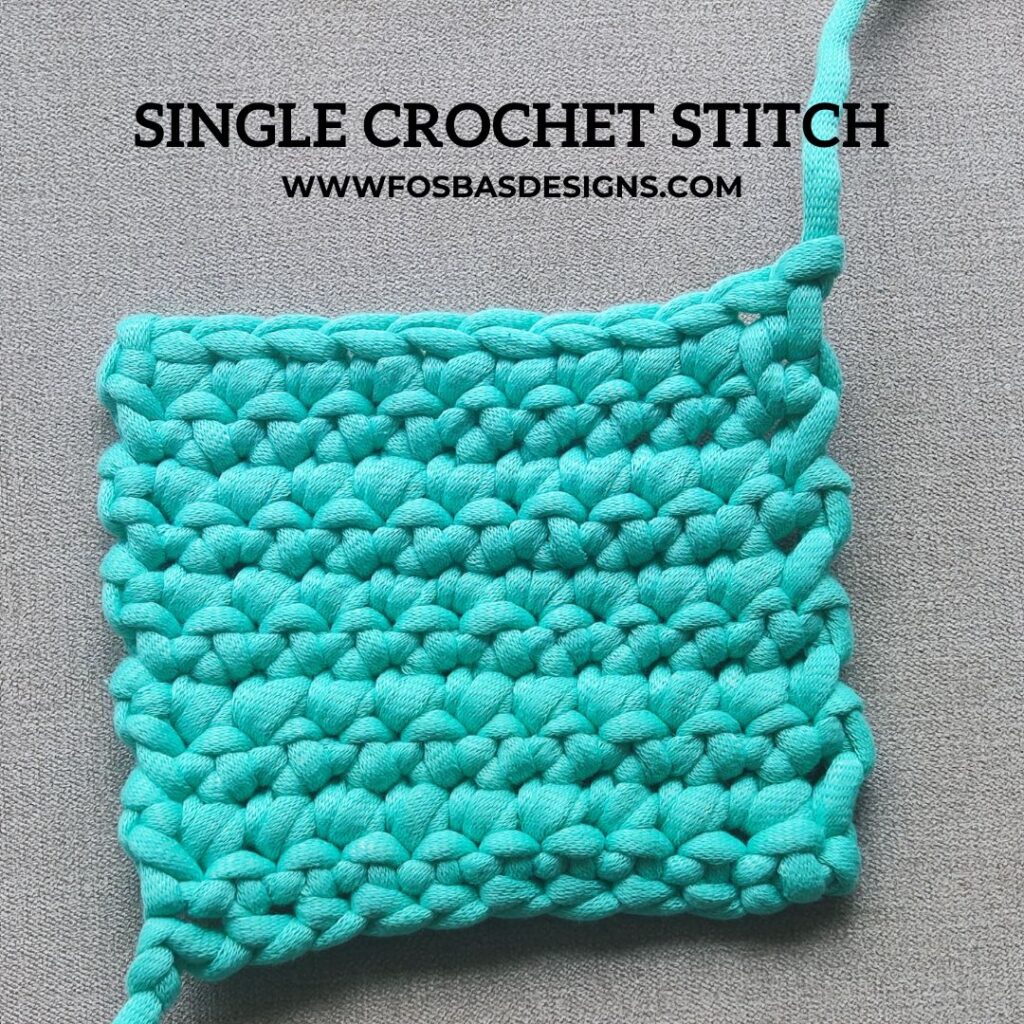
Slip Stitch
The slip stitch is another crochet stitch that uses minimal yarn. It is one of the smallest stitches in crochet. To make a slip stitch, you will insert your hook into the stitch, yarn over, and pull through both the stitch and the loop on your hook.
Slip stitches are often used for edging, joining, or shaping in crochet projects. Because it is such a small stitch, it creates an even denser fabric than a single crochet, making it suitable for certain projects like baskets or pot holders.
Half Double Crochet
Half double crochet is a stitch that falls between single and double crochet regarding height and yarn usage. To create a half-double crochet, you will yarn over, insert your hook into the stitch, yarn over, pull up a loop, yarn over again, and pull through all three loops on the hook.
This stitch offers a nice balance between the density of single crochet and the openness of double crochet. It uses slightly more yarn than a single crochet but less than double crochet, making it an excellent choice for projects like blankets, hats, and shawls, where moderate density and texture are desired.
Lacy and Openwork Crochet Stitches
Solomon’s Knot
The Solomon’s Knot is a versatile and efficient lace stitch that uses the least yarn among common lacy crochet stitches. This openwork pattern creates a delicate, airy fabric, perfect for lightweight projects like shawls and summer garments.
To crochet a Solomon’s Knot, you’ll make a series of loops and single crochet stitches, with each knot consisting of a long chain and a single crochet. As you work on your project, you’ll notice the yarn consumption stays minimal, making this an excellent stitch for budget-conscious crocheters.
V-Stitch
Another popular lacy crochet stitch is the V-stitch. As the name suggests, this stitch creates a series of ‘V’ shapes throughout the fabric using double crochet and chain stitches. The V-Stitch results in a light and open texture, suitable for projects such as blankets, scarves, and garments while using less yarn than more dense stitch patterns.
To master the V-Stitch, you must be familiar with chaining, double crochet, and skipping stitches. This stitch pattern is beautiful and easy to learn, making it a great choice for beginners working with lace and openwork designs.
Trellis Stitch
For a slightly more intricate openwork pattern, consider the Trellis Stitch. This lacy crochet stitch creates a stunning, grid-like appearance reminiscent of a garden trellis, using a combination of chains and taller stitches, such as double or treble crochet.
While the Trellis Stitch may look complicated, it’s relatively simple to execute once you get the hang of it, and leaves plenty of open space, efficiently conserving your yarn supply. Projects like throws, curtains, and lightweight tops will benefit from the breathable, geometric pattern that the Trellis Stitch provides.
Practical Applications and Projects
When aiming to conserve yarn in your crochet projects, selecting stitches that efficiently use your materials is important. This section’ll explore some practical applications and projects utilizing stitches known for low yarn consumption.
Blankets and Scarves
Consider using stitches like the treble stitch or Solomon’s Knot for blankets and scarves. These stitches provide warmth while using relatively less yarn. Openwork patterns with chains and spaces, like the V-stitch, filet stitch, or trellis stitch, also make great options as they create light, airy, yet cozy blankets and scarves.
FAQ about crochet stitches that use the Least yarn
Yarn-efficient crochet patterns?
You can find many yarn-efficient crochet patterns online. For instance, the 30-minute crochet beanie made using crochet half double crochet stitch works up pretty quickly as it uses the chunky weight of yarn! Other quick crochet projects that use single skeins of yarn can be seen here.
Loose crochet stitches?
Loose crochet stitches generally use less yarn. Examples include treble crochet, double crochet, and Solomon’s Knot. These stitches create more “airy” projects and consume less yarn than tighter stitches, such as single or half-double crochet.
Crochet stitch for fast work?
Crochet stitches like treble crochet, double crochet, and extended stitches (i.e., extended single crochet, extended double crochet) usually enable faster work than tighter stitches such as single or half-double crochet. These stitches have more height per row, meaning you can cover more ground with fewer rows.
Comparison of yarn usage?
When comparing yarn usage, consider stitch height and the overall fabric density. For example, chain and slip stitches use the least yarn, followed by loosely stretched treble and double crochet stitches. The closer the stitches are, the more yarn they require. Remember that even among the same stitch type, yarn usage can vary based on tension and stitch placement.
Yarn-saving techniques?
To save yarn, focus on maintaining consistent tension, using loose crochet stitches, and considering stitch placement. Another tip is to use a larger hook size for a more open fabric that consumes less yarn. Finally, always remember to weave in ends efficiently to minimize waste.
Other useful crochet articles to check out
The best yarn to crochet with and the ones you should avoid!
The best crochet stitches for sweater
How long does it take to crochet a sweater and a beanie – Based on real-time data
Everything you need to know about Blocking your finished crochet pieces
In conclusion, of the basic crochet stitches, the double crochet and the treble crochet stitches use the least amount of yarn. They are short in the length and weight of yarn used for a 4 by 4-inch swatch. The Solomon’s Knot consumes the least yarn among common lacy crochet stitches.
More crochet projects to check out on the blog.
Best yarn to crochet with and the ones to avoid
How to Crochet a Sweater for a Beginner
Real-time to crochet a sweater
Real-time it takes to crochet a hat
How to Crochet a Magic Ring

